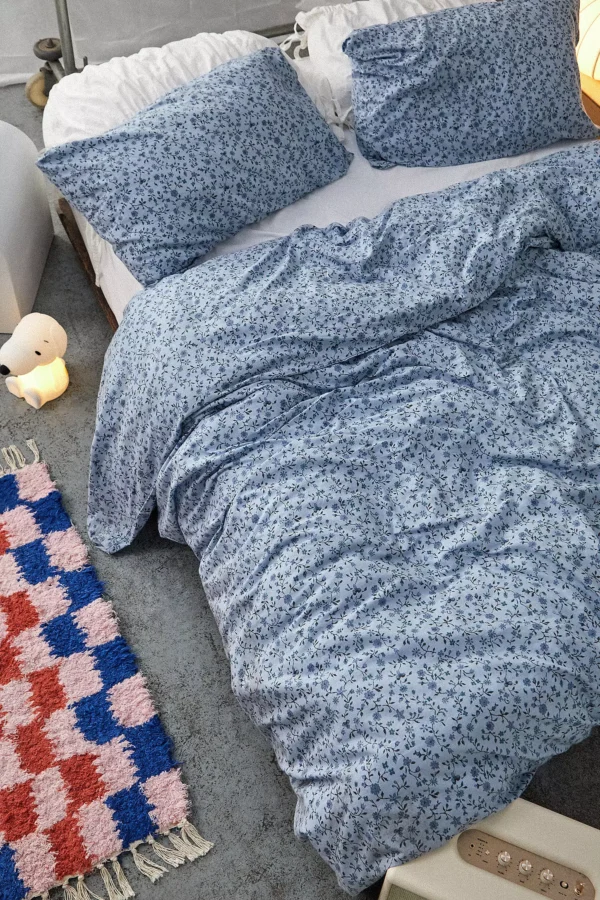
Bedtime Battles: How to Help Children Sleep Better

Many parents can relate to the struggle of getting kids to bed on time and promoting the chances of them staying in bed until morning. Although the odds can often feel stacked against us there are ways to make bedtime a more positive experience for kids and create the right environment to facilitate the opportunity for the best possible night’s sleep.
Here, Tempur sleep expert and chartered psychologist, Suzy Reading, has given her top tips on how to help children sleep better. Tips include the importance of developing a positive association with sleep, sticking to a routine where possible and involving children in the decision making process in the run up to bedtime.
A positive sleep relationship
Observe the language you use about sleep, rest and relaxation, and especially how you talk about sleep in front of your children. Avoid using their bedroom or bedtime as a punishment and try instead to talk about sleep and rest in positive ways, explaining why it’s so important for us all. Helping kids connect with their personal ‘why’ of sleep will get them more on board with the idea of bedtime. Explain to children that sleep helps us grow and replenish, focus and think straight during lessons, enjoy time with our friends more, run fast and perform better in the sports or activities we love.
Adapt your language so that sleep and bedtime are positively associated and something to look forward to at the end of each day. Even wishing them a “happy sleep” rather than “good night” can help develop a more positive association with sleep.
Routine is everything
Kids thrive on certainty and routine, and this certainly applies to sleep and bedtime too. Try to ensure regular and consistent wake up times, evening activities, and a set bedtime as this will boost circadian rhythms, making it easier for kids to feel ready for bed. It’s okay to shift timings to suit the ‘new normal’ as these will undoubtedly need to change because of the current circumstances, but it’s important to remain as consistent as possible with the new timings.
Wind-down ritual
It’s easy for kids to feel like all the fun is over when it’s time for bed but remind them that it’s just time for a different kind of fun and that bedtime is a time for calming activities that help them relax physically, emotionally and mentally. Follow a routine of fun bubble bath, followed by floor-based bedtime stretches (save the standing up energising yoga for the daytime), breathing exercises, storytelling and reading. Bedtime music can also help kids drift off easier. Make sure they’ve been to the loo as a full bladder can pull them out of a deep sleep, which can contribute to bad dreams.
Help children feel like they have some kind of control over their bedtime routine rather than making them feel they’re being ‘ordered’ with no input. Let them choose from simple options. Bath or shower? Brush your teeth or PJs first? Which book would you like to read? They should be more cooperative if they feel they have a say in the shape of their routine.
It’s ok to worry
Factor in time for the worry parade. Inevitably, just as we turn off the lights all the worries, unanswered questions and stories from the day come bubbling up from little ones. While this can be frustrating, pre-empt this by building in time to the wind-down routine for chatting and processing thoughts and feelings. Journaling towards the end of the day can help to get everything down to avoid the mental load come bedtime. Expect that this will happen, factor the time in, and keep bedtime a calm, safe place for kids to communicate.
Additional tips
Get kids exercising daily to ensure they’re naturally tired by bedtime. Head outdoors for exercise whenever possible and vary activities to sustain their interest. Try cycling, skipping, jogging, dancing… anything to get their bodies moving. Switch all devices and screens off at least an hour before bedtime. Try to avoid giving them dinner too close to bedtime as this can be harder to digest and can give them an energy boost. Similarly, avoid sugary treats for the latter part of the day.
If you have more than one child, spend dedicated quality time with each child every day. This can be at bedtime or during the day and it helps them feel they’ve had connection time before going to sleep. Younger children will naturally need more attention than older, more self-sufficient kids. What’s important is time to connect and feel cared for one-on-one.
Firm but fair
Be firm, fair and always calm and kind when it comes to setting bedtime boundaries. If you regularly give in to their demands, children tend to push that little bit more each night. Set and explain consequences that are realistic and that kids can understand. For example: “if you stay in bed tonight, we can go to the park tomorrow morning; if you don’t brush your teeth, you won’t be able to have any treats tomorrow.” Make them repeat consequences back to you and tell them you believe they’ll make the right decision – this will help them feel empowered to choose the right option. Be consistent in sticking to the consequences and don’t buckle under inevitable tears and tantrums.
If they need time with you to settle, try to allow for that time. Children need to feel comforted and safe in order to sleep well. But be consistent and firm with the limits. For example: “I will stay for 10 minutes and then I’ll check on you in 10 minutes’ time.”
Prep the bedroom
Use the senses to prepare your children’s minds and bodies for sleep. Magnesium lotion, designed to promote relaxation, makes for a soothing massage ritual; use lavender pillow spray to calm the mind; and use breathable cotton bedding and linen to make sure kids don’t feel too warm or too cold at night. The Tempur-Fit™ Classic Quilt is a lightweight duvet that maintains the correct body temperature throughout the year, keeping you cool in summer and warm in winter.
Try to keep the room temperature between 16-18°C ideally. Think of the bedroom environment like a cave: cool, dark, and quiet. Use blackout curtains to prevent any chinks of light and remove devices that emit distracting blue light for optimal slumber.













































